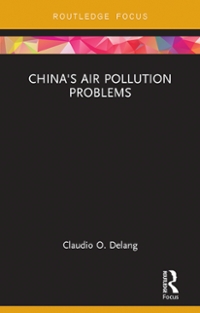Question
Big Mak Burger McDonald's Corporation (McDonald's) sued L.C Big Mak Burger, Inc. for trademark infringement and unfair competition by Big Mak due to colorable imitation
Big Mak Burger McDonald's Corporation (McDonald's) sued L.C Big Mak Burger, Inc. for trademark infringement and unfair competition by "Big Mak" due to colorable imitation on the signages, wrappers, and containers of its registered "Big Mac" mark for the same food products.
Big Mak appealed the case. But the final decision of the court favored McDonald's.
There exist some distinctions between the names "Blig] M[ac]" and "B[g] M[akJ" as appearing in the respective signages, wrappers, and containers of the food products of the parties. The infringement goes beyond the physical features of the questioned name and the original name. There are still other factors to be considered. Applying the dominancy test, the Court finds the respondent's use of the "Big Mak" mark results in a likelihood of confusion. First, "Big Mak" sounds exactly the same as "Big Mac." Second, the first word "Big Mak," is exactly the same as the first word in "Big Mac." Third, the first two letters in "Mak" are the same as the two letters in "Mac." Fourth, the last letter in "Mak" while a "k" sounds the same as "c" when the word "Mac" is pronounced. Fifth, in Filipino, the letter "K" replaces "c" in spelling, thus "Caloocan" is spelled "Kalookan."
Furthermore, the respondents' inability to explain sufficiently how and why they came to choose "Big Mak" for their hamburger sandwiches indicates their intent to imitate the petitioners' "Big Mac" mark. Contrary to the Court of Appeals' finding, the respondents' claim that their "Big Mak" mark was inspired by the first names of respondent Dy's mother (Maxima) and father (Kimsoy) is not credible. For one, he could have put his father's name ahead of his mother's, as is usually done in this patriarchal society, and derived letters from said names in that order. Or, he could have taken an equal number of letters (e.g., two) from each name, as is the more usual thing done, the more plausible behind respondents' choice of the word "Mak".
Under Section 23, in relation to Section 29 of RA 166, a plaintiff who successfully maintains trademark infringement and unfair competition claims is entitled to injunctive and monetary relief. Here, the RTC's decision was upheld in issuing the injunction as of August 1990 (made permanent in its Decision of 5 September 1994) and in ordering the payment of P400,000 actual damages in favor of petitioners, exemplary damages of P100,000 plus attorney's fees and litigation expenses. The injunctive writ is indispensable to prevent further acts of infringement by the respondent's corporation. Also, the amount of actual damages is the reasonable percentage (11.9%) of respondent corporation's gross sales for three (1988-1989 to 1991) of the six years (1984-1990) respondents have used the "Big Mak mark.
Questions:
1.Why is unfair competition also unethical and not just Illegal? Give some actual evidence/s that would support your answer.
2. Research and comment on R .A. 8293 (IPC) on Registration of Trademarks and Service Marks. Cite some reasons why a mark cannot be registered.
Step by Step Solution
There are 3 Steps involved in it
Step: 1

Get Instant Access to Expert-Tailored Solutions
See step-by-step solutions with expert insights and AI powered tools for academic success
Step: 2

Step: 3

Ace Your Homework with AI
Get the answers you need in no time with our AI-driven, step-by-step assistance
Get Started


